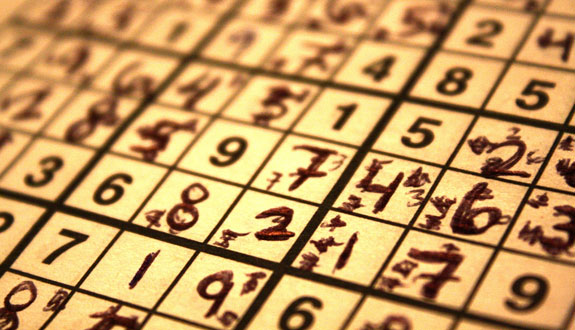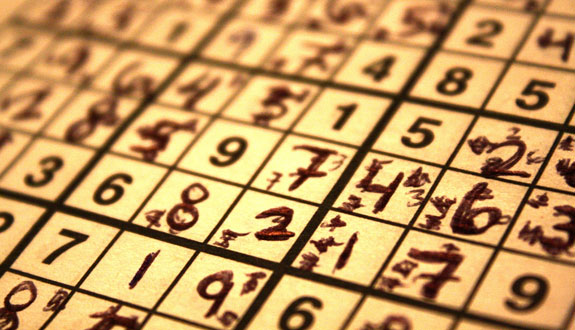
Note: As of August 2024, the LSAT will no longer have a Logic Games Section. The June 2024 exam will be the final LSAT with Logic Games. Learn more about the change here.
As someone who teaches and blogs about the LSAT, I’m always trying to follow the test very closely and discern which skills, concepts, and question types are being emphasized on recent tests. To be clear, since the LSAT took its current shape in 1991, it’s always tested the same broad set of skills, concepts, and question types. If you have the time to master all of those, you definitely should try to master all of those.
However, very few of us have years to dedicate to the LSAT; for those, it makes sense to look at the trends set by recent exams, to see what’s being tested disproportionately on recent tests. Then you can dedicate a disproportionate amount of your finite study time to those concepts.This is especially true on the Analytical Reasoning, or Logic Games, section, where four little games have a huge impact on your overall score. If you’ve dedicated all your study time to the wrong kinds of games and concepts — well, you don’t have to be an analytical whiz to predict how your score will turn out.
And as a self-appointed LSAT trendspotter, one unmistakable trend on the recent Logic Games section is the importance of making what we at Blueprint call “scenarios.” Games on recent exams — definitely every published exam over the last few years, and reportedly on the unpublished exams during this time period, as well — are written in such a way that there are only a few possible outcomes of how players can be ordered or assigned to groups. If you can figure out why the game can only play out in a few ways, and actually figure out how the game plays out in each of those “scenarios,” then you’ll quickly, accurately, and confidently cycle through the questions.
The concept of making scenarios is so central to recent games — I think over 90% of games in the last few years are much, much easier if you make the right scenarios — that I bring it up basically every chance I get: classes, tutoring sessions, every time I recap an exam, this blog post. It’s gotten so bad that students, colleagues, and friends are beginning to worry that if I get any more obsessed with this idea, I’ll start showing up outside LSAT test centers disheveled and starry-eyed, with a cardboard sign that reads, “MAK SUHNARYOHS PEEPUL.”
Although we’ve written about scenarios before, it’s such a broad and extensive topic that any attempt to cover it all in the space of a blog post would do it a disservice. Rather, ask many questions about making scenarios of whoever you’re using for your LSAT study needs and get lots of practice trying to construct scenarios on the games that you practice.
However, there is another trend on the Logic Games section that we can address extensively today. This trending concept is a type of game that’s shown up on almost every recent published test (and, if the surreptitious reports of recent unpublished exams are accurate, many unpublished tests as well). It’s shown up as game four of the June 2017 exam, game two of September 2017, game four of June 2018, games three and four of November 2018, game four of June 2019, and game three of September 2019. That last game took this concept to such extreme and dada lengths that many test takers were unable to determine exactly what the game was asking them to do. And, ironically, the type of game that has been so overemphasized on recent tests is all about underemphasizing one element of the game — the players.
At Blueprint, we call these games “underbooked” games. As our in-house prognosticators know all too well, it’s very hard to predict exactly what’s going to be on the LSAT. But given the prevalence of “underbooked” games on recent exams, the likelihood that one will appear on your test is very high. Given that, let’s talk about what an “underbooked” game is and how to approach them.
What does it mean for a game to be “underbooked”?
A game is “underbooked” when there are more slots in your game set-up than there are players to fill them. This can occur in both ordering and grouping games. One of four employees must work a shift on each of six days — Monday through Saturday? We’d have six slots in that game, one for each day that someone’s gotta work. But we’d only have four players (our employees) to fill those slots. Since four players must fill six ordered slots, it’s an underbooked ordering game. Or, maybe there are three panels that five representatives must serve on, but each panel will include exactly three of the representatives. We’d have three groups (the panels) with three slots each, giving us a total of nine slots to fill. But we only have five players (our representatives) to fill those slots, making this an underbooked grouping game.
In nearly every underbooked game, certain players will have to fill more than one slot. At least one employee will have to work more than one shift; at least one representative will have to be assigned to more than one panel. In these games figuring how many players can fill more than one slot, which players can fill more than one slot, and how many slots said players can fill is incredibly important. To help us do that, we’ll discuss a technique in just a second.
But before we do, we should clarify that in order for a game to be underbooked, we have to know exactly how many slots we have to fill. Some ordering games — like the infamous “computer virus” game from September 2016 — and many grouping games do not specify how many slots we have to fill. The number of slots, in these games, can change. These games aren’t underbooked — at Blueprint, we call these games “unstable.” We don’t want to get these two concepts confused — different techniques should be employed for underbooked and unstable games. Unstable games also tend to be a bit more difficult. Fortunately, games on recent exams have been much more likely to be underbooked than unstable.
How do you deal with the fact that the game is underbooked?
To figure out how many of players can fill more than one slot and how many slots said players can fill, we’re going to use a little technique called “playing the numbers.” This involves a small amount of math, but fortunately for the less numerically inclined among us, it’s a simple-arithmetic, can-use-your-fingers-if-you-have-to kind of math. To wit: let’s say you we have five players to fill seven slots. It really doesn’t matter if this were an ordering game or grouping game — we’d use the same technique. Just remember: five players, seven slots.
We’d then want to check the rules for any that restrict the number of slots our players can occupy. Some of these rules might restrict all of your players (e.g., “each player must occupy at least one slot”; “no player can occupy more than three slots”). Others may restrict only one or two players (e.g., “player X must occupy exactly two slots”; “player Y must occupy more slots than player Z”). These rules are sometimes slipped into the introductory paragraph in these games, so make sure to check there, too. Once we gather all these kinds of rules, we’ll want to play the numbers.
Let’s take that five-players/seven-slots hypothetical. And let’s make it simple — let’s say that the only rule that restricted the number of slots players could occupy said, “Each player must occupy at least one slot.” That’s a simple minimum — everyone must got at least once. We’d then play the numbers. To do so, we’d simply write down, next to our set-up, five new slots to stand in for our five players. We’re going to put numbers in those slots that add up to seven, since that’s how many slots we have to fill:
_ _ _ _ _ = 7
We can start by throwing in as many minimums as we can. We can put four “1s” in the first four slots. To add up to seven, then, we’d have to put a “3” in the final slot:
1 1 1 1 3 = 7
In this distribution of our players, four of our players will be occupying only one slot, and one would be occupying three slots. But this wouldn’t be our only distribution, necessarily. We could also take one away from the “3” (so it becomes a “2”) and give it to one of the “1s” (so it would also become a “2”):
1 1 1 1 3 = 7
1 1 1 2 2 = 7
And these would be our two potential distributions. Either one player occupies three slots and everyone else occupies just one, or two players occupy two slots a piece and everyone else occupies just one. Knowing the potential distributions helps in a variety of ways — sometimes the questions explicitly ask about the possible distributions, sometimes knowing the distributions helps you work through otherwise difficult questions, and sometimes they’re useful in constructing scenarios (more on that below).
Let’s add just one layer of complexity before moving on. Let’s say that another rule stated that one player had to occupy exactly two slots. What does that tell us about our distributions? If a player has to go exactly twice, then the first distribution is no longer possible. In that first distribution, no one is going exactly twice. Just one time or three times. So we’d cross off our first distribution, and we’d be left with the second as the only possible distribution of players.
1 1 1 1 3 = 7
1 1 1 2 2 = 7
And in that one possible distribution, there would be two players who “repeat,” or go twice in the set-up. Knowing which players can “repeat” is incredibly helpful in these underbooked games, for reasons we’ll address in just a second.
You mentioned scenarios earlier — are there any ways to use those on games that are underbooked?
There are many ways to make scenarios in games that are underbooked. I think each of the recent underbooked games I mentioned earlier are easier with scenarios. The question is less whether you can make scenarios with games that are underbooked, and more how exactly you should make scenarios on games that are underbooked.
All the normal types of rules and constraints that are great for scenarios on other ordering and grouping games will help you on these underbooked games as well. In fact, those would be the first things I’d look for on these games to construct scenarios. But there’s another very helpful, underbooked-specific constraint to look for to make scenarios, particularly on underbooked grouping games. When there’s only one potential distribution, it’s helpful to check if there are only a few players who could be your “repeat” player(s). If so, it’s a good idea to construct a few scenarios based on what your game would look like if each possible player who could be the “repeat” player was the “repeat” player.
Let’s circle back to our earlier example where the only potential distribution was “1 1 1 2 2.” Technically, there are two “repeat” players there (the two players that go twice). So let’s also add a few more conditions: A, B, C, D, and E are our players; A and B must go exactly once; C must go exactly twice. In that case, we have one of the two repeat players figured out (C), but the second repeat player is still a mystery. But since it couldn’t be A or B, it would have to be either D or E. That would give us two scenarios to construct — one where D was the repeat player, and one where E was the repeat player. Even if we didn’t know that C was one of the repeat players, our options would still be fairly limited. If A and B couldn’t repeat, it would fall on either C and D, or C and E, or D and E to repeat. That would give us three scenarios. Real games are obviously a bit more complex than this hypothetical — but honestly, not by much.
Using the constrained “repeat” players has been a super common way to construct scenarios on recent exams. This includes game four on June 2018 and game 3 of September 2019 — two of the most notoriously difficult games on recent exams.
————
So don’t let this small piece of trendspotting go to waste — underbooked games have been overtested on recent exams, so plan on getting one on your test. Follow these tips, get lots of practice with these types of games, and conquer what will likely be considered the hardest game on your exam. But when your fellow test-takers complain about how crazy that game was, try to undersell how easy you found it — it’s unbecoming to be so overjoyed following an LSAT. If you need additional Logic Games practice, sign-up for a free trial of our Self-Paced course.




